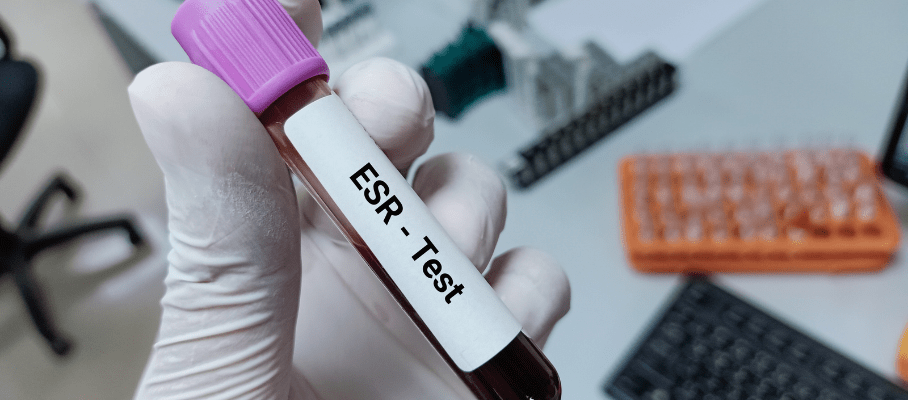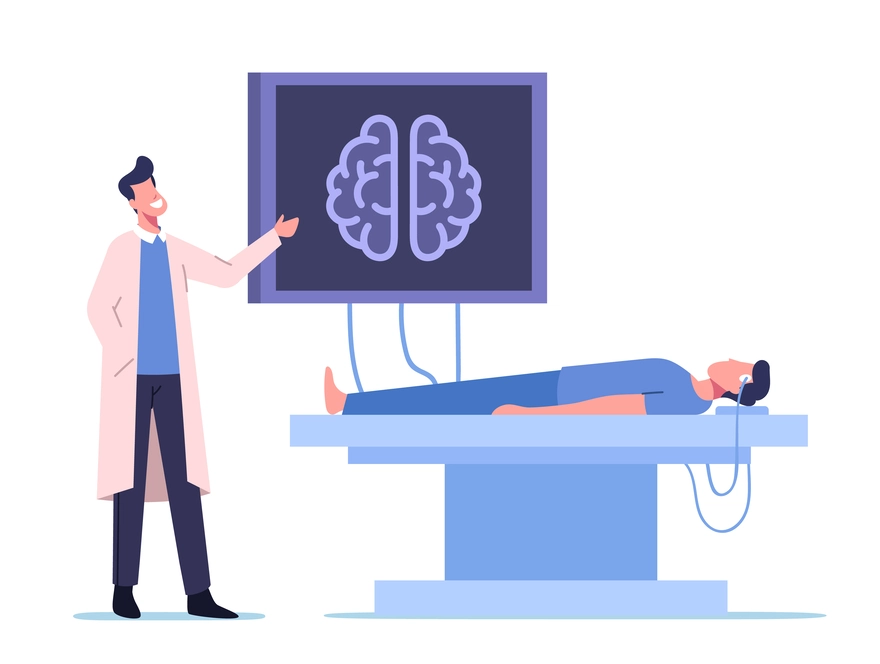Preventive Healthcare
Flat Head Syndrome in Babies: Causes, Prevention, and Treatment

Table of Contents
- What is positional plagiocephaly?
- Types of plagiocephaly
- How common is positional plagiocephaly?
- What are the symptoms of plagiocephaly?
- What causes flat head syndrome?
- Are some babies more at risk for positional plagiocephaly?
- How is positional plagiocephaly diagnosed?
- How is positional plagiocephaly treated?
- Are there any risks with repositioning?
- How long do I need to reposition my baby?
- What if repositioning isn't enough?
- How do you prevent flat head syndrome?
- What can we expect if our baby has positional plagiocephaly?
- When to see a doctor?
- Conclusion
- FAQ
What is positional plagiocephaly?
Positional plagiocephaly, also called flat head syndrome, is a condition where a baby develops a flat spot on the back or side of their head. It happens when a baby's soft, malleable skull becomes flattened due to prolonged pressure on one area. This usually occurs when babies spend a lot of time lying on their backs, which is the safest sleeping position to reduce the risk of sudden infant death syndrome (SIDS). However, too much time in one position can lead to a flat head.
Types of plagiocephaly
There are two main types of plagiocephaly:
- Positional plagiocephaly: This is the most common type, caused by external pressure on the baby's head. It usually develops after birth due to the baby's sleeping position or extended time in car seats or swings.
- Congenital plagiocephaly: This less common type is present at birth and occurs when the skull bones fuse too early. It may be associated with other conditions like craniosynostosis.
How common is positional plagiocephaly?
Flat head syndrome is relatively common, affecting up to 50% of infants. Its incidence has increased since the "Back to Sleep" campaign began promoting back sleeping to reduce SIDS risk.
What are the symptoms of plagiocephaly?
The main symptom of plagiocephaly is a flattened area on the back or side of your baby's head. You may also notice the following flat head symptoms:
- Asymmetry of the head and face
- One ear pushed forward
- A bald spot on the flattened area
- Tight neck muscles on one side (torticollis)
If you see any of these flat head symptoms, it's best to consult your paediatrician for an evaluation.
What causes flat head syndrome?
Several factors can contribute to flat head causes, including:
- Sleeping on the back, especially if baby's head is always turned to the same side
- Too much time spent in car seats, bouncers, swings where the head is often in the same position
- Being born prematurely, preemies have softer skulls
- Assisted deliveries with forceps or vacuum extraction
- Crowding in the womb (twins/multiples)
- Torticollis - tight neck muscles limit head turning
Are some babies more at risk for positional plagiocephaly?
Yes, certain babies have a higher likelihood of developing flat head syndrome:
- Premature babies: Their softer skulls are more pliable and prone to moulding.
- Twins or multiples: Crowding in the womb can lead to positional skull flattening.
- Babies with torticollis: Tightness in the neck muscles causes them to lie with their head turned to one side.
- Babies who are less active: Reduced movement and more time on their backs increase the risk.
If your baby falls into any of these categories, take extra care with positioning and be vigilant about tummy time.
How is positional plagiocephaly diagnosed?
Your paediatrician can usually diagnose positional plagiocephaly by examining your baby's head shape during routine checkups. They will look for flattening and asymmetry and check neck motion. Measurements may be taken to determine severity. Imaging tests like X-rays or CT scans are rarely needed unless there are concerns about craniosynostosis.
How is positional plagiocephaly treated?
Treatment for flat head syndrome aims to take pressure off the flattened area and encourage the skull to grow normally. Options include:
- Repositioning: Regularly changing your baby's head position during sleep, feeding, and play. Place them with the rounded side of their head touching the mattress and the flattened side facing up.
- Tummy time: Placing your baby on their tummy for short supervised sessions several times a day. This strengthens neck and shoulder muscles and relieves pressure on the head.
- Physical therapy: Stretching exercises can help loosen tight neck muscles and allow your baby to turn their head more easily.
- Plagiocephaly therapy - For moderate to severe flattening, your doctor may recommend a custom-moulded helmet or band to gently redirect head growth. These are usually worn 23 hours a day for a few months.
Are there any risks with repositioning?
Repositioning is a safe and effective treatment for most babies with flat head syndrome. The main thing to keep in mind is to always place your baby on their back to sleep, even if they have a flat spot. Tummy time should only be done when your baby is awake and supervised to avoid suffocation risk. If your baby resists repositioning or cries excessively, talk to your doctor.
How long do I need to reposition my baby?
Continue repositioning techniques until your baby can sit up and move their head freely on their own, usually around 4-6 months old. Make it part of your daily routine, especially during sleep and feeding times.
What if repositioning isn't enough?
If your baby's flat head doesn't improve after a few months of repositioning and tummy time, your doctor may recommend other flat head treatments. For moderate to severe cases, physical therapy can help stretch and strengthen neck muscles, allowing your baby to turn their head more freely. This is especially helpful if your baby has torticollis. In rare cases where the head flattening is very pronounced and doesn't respond to conservative measures, your doctor may prescribe a custom-fitted orthotic helmet to gently correct the skull shape. This plagiocephaly therapy is usually started around 6 months of age and continues for a few months as your baby's head grows.
How do you prevent flat head syndrome?
To prevent a flat head, give your baby plenty of supervised tummy time when awake, from birth on. Alternate sleep positions and head direction. Limit time in car seats, strollers, and swings. Hold your baby upright often. Encourage active play and exploration as they grow to promote movement and reduce pressure on the head.
What can we expect if our baby has positional plagiocephaly?
With early detection and consistent treatment, most babies with mild to moderate flat head syndrome see great improvement, often full correction, within 2-3 months. Severe cases can take longer, up to 6-12 months, and may not completely resolve. Rest assured that positional plagiocephaly doesn't impact brain development, vision, or hearing.
When to see a doctor?
Contact your paediatrician if you notice any of these flat head symptoms:
- A flattened area on your baby's head
- Asymmetry of the face or ears
- A strong preference to turn the head to one side
- Very limited neck motion
- No improvement with repositioning after 4-8 weeks
Your doctor can assess the flat head causes, severity, rule out other conditions, and recommend the best treatment plan.
Conclusion
Flat head syndrome is a common condition that, while worrying for parents, is usually harmless and easily treatable. By understanding the causes and symptoms of plagiocephaly, you can take proactive steps to prevent and correct any flattening of your baby's head. Simple measures like repositioning and tummy time are often effective, with flat head treatment options like physical therapy and orthotic helmets available for more severe cases. If you have concerns about your baby's head shape, don't hesitate to consult your paediatrician.
At Metropolis Healthcare, we understand the importance of your baby's health and development. Our expert team of phlebotomists provides gentle, child-friendly blood collection services to help monitor your plagiocephaly treatment progress. We offer a wide range of paediatric blood tests with quick, reliable results delivered to your phone via our mobile app.
FAQ
Is flat head syndrome bad for my baby?
In most cases, flat head syndrome is a cosmetic issue that doesn't harm brain development or function. However, it's still important to treat to promote normal head shape and symmetry. Rarely, severe flattening can lead to ear misalignment, jaw issues, or vision problems if left untreated.
Is flat head syndrome a sign of neglect?
No, flat head syndrome doesn't mean you're neglecting your baby. It's a common side effect of important practices like putting babies to sleep on their backs. As long as you're following safe sleep guidelines and providing plenty of tummy time, repositioning, and movement opportunities, you're taking great care of your baby.
Can a flat head be corrected?
Yes, positional plagiocephaly can usually be corrected, especially if caught early and treated consistently. Repositioning and tummy time are very effective for mild to moderate cases. Severe flattening may need plagiocephaly therapy with a moulding helmet to redirect growth. The key is starting treatment as early as possible, ideally between 4-6 months old, while the skull is still malleable.
What is the advantage of a flat head?
There is no inherent advantage to having a flat head. In fact, a flattened head shape can cause asymmetry and, in severe cases, lead to misalignment of the ears, eyes, and jaw. The goal should be promoting a round, even head shape through repositioning and other therapies as needed.
At what age does flat head start?
Flat head syndrome usually develops between 6 weeks and 4 months old, as this is when the skull is most malleable and babies spend a lot of time on their backs. Flattening can worsen if the baby develops a preferred head position during this time. This is why it's so important to alternate head position, do tummy time, and limit time spent in containers from birth on.































